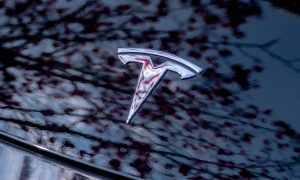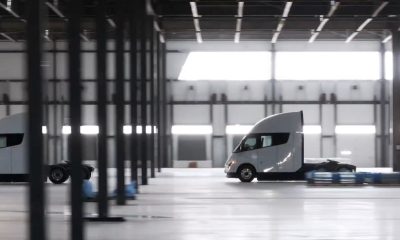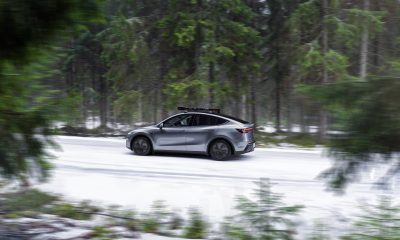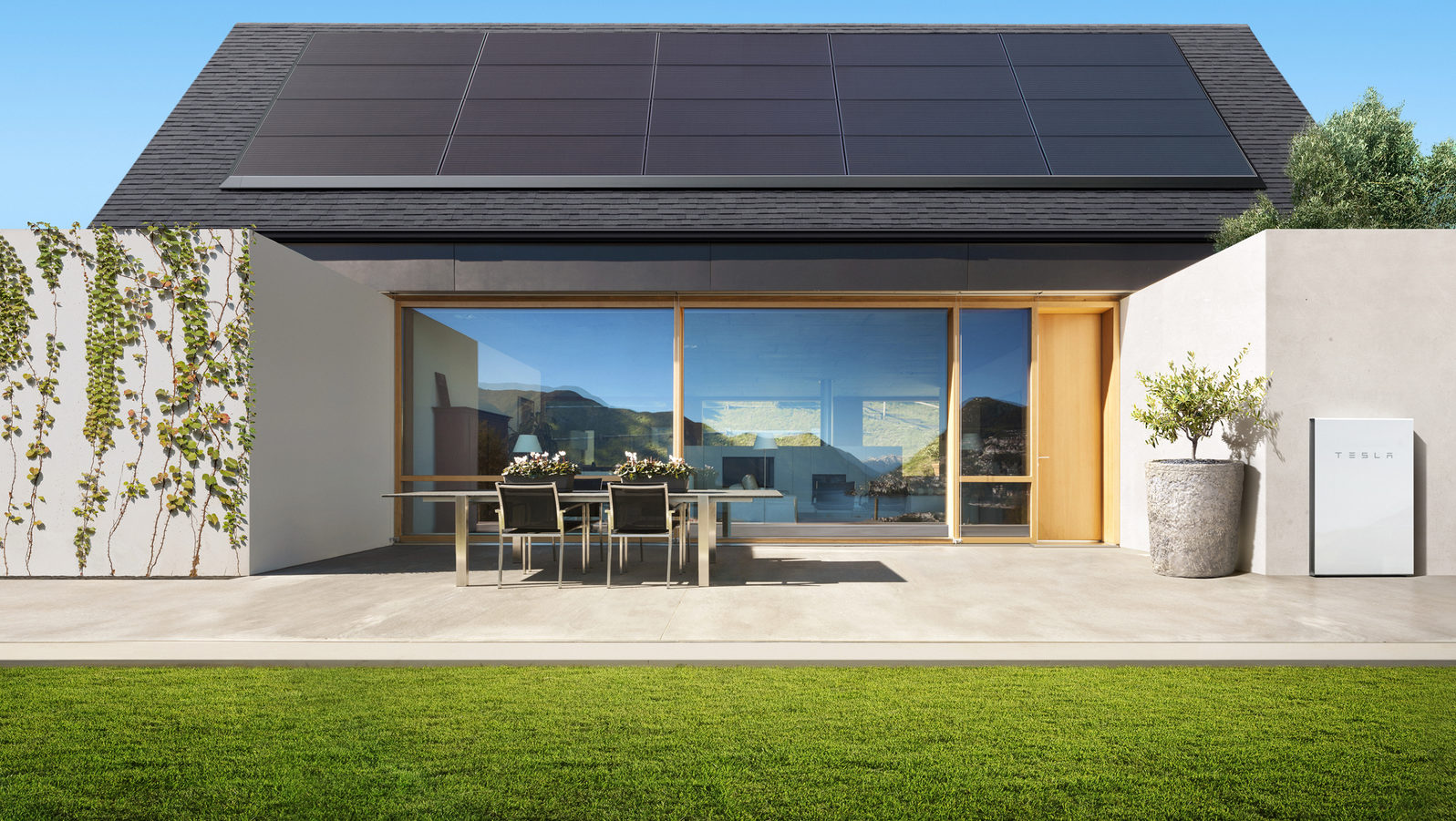

Energy
Tesla’s giant ‘Virtual Power Plant’ made of 50k homes and Powerwalls enters 2nd phase
Tesla’s ambitious plan to establish a 250 MW/650 MWh “Virtual Power Plant” in South Australia is moving to its second phase. In an announcement last week, Minister for Energy and Mining Dan van Holst Pellekaan stated that initiatives are now underway to install Powerwall 2 home battery units and solar panels to another 1,000 Housing SA properties.
The proposed Virtual Power Plant was conceived by Tesla and South Australia’s former Labor government earlier this year. The project is undoubtedly ambitious, involving 50,000 connected homes, each fitted with a 13.5 kWh Tesla Powerwall 2 battery and a 5 kW rooftop solar system. The 50,000 houses are expected to deliver 250 MW of solar energy and 650 MWh of battery storage capacity. Just like Tesla’s Powerpack farm in South Australia, the VPP will be capable of providing additional grid stability by shifting demand away from a stressed grid during peak hours.
The first phase of the project, which involved the installation of batteries and solar panels to the first 100 houses of the VPP, has been successful so far. Households that are part of the existing system have reported a 70% reduction in their grid consumption, leading to lower power bills. With the first trial phase done, Tesla and solar retail partner Energy Locals are now looking to add 1,000 more households to the system.
Tesla’s planned Virtual Power Plant passed through several challenges this year, particularly after the Labor Party was replaced by the Liberal Party after the elections last March. In an announcement after being elected, new South Australian Premier Steven Marshall suggested that his government would not be supporting Tesla’s VPP. Marshall’s government instead proposed an alternative, involving subsidies for 40,000 homes to purchase battery systems.
Unlike Tesla’s proposed Virtual Power Plant, Marshall’s plan would require homeowners to purchase battery packs (albeit at a lower price), making the system out of reach for low-income households. Marshall’s plan is also limited to houses that are already fitted with solar panels. Tesla’s VPP, on the other hand, aims to provide both solar systems and Powerwall 2 batteries to 50,000 low-income households for free.
Marshall eventually took a more moderate stance on Tesla’s Virtual Power Plant amidst backlash over his lack of support for the project. By the end of May, Energy Minister Dan van Holst Pellekaan announced that the South Australian government would be supporting both Tesla’s proposal and Marshall’s alternative battery subsidy plan. In an announcement last week at the SA Department of Energy and Mining’s official website, van Holst Pellekaan expressed his optimism about the growing VPP.
“The VPP will deliver cheaper electricity to some of South Australia’s most disadvantaged households while increasing the reliability of the state’s electricity network. We have made South Australia the world capital of home batteries with our Home Battery Scheme attracting three battery manufacturers to South Australia and by driving forward with the VPP,” he said.
If the second phase of the Virtual Power Plant proves successful, the third, most ambitious phase of the project will commence. Provided that funding for the estimated AU$800 million ($628 million) project is secured, the system would grow to 50,000 homes over the next few years. When complete, the 50,000-strong Virtual Power Plant is expected to deliver 250 MW of solar energy and 650 MWh of battery storage capacity, dwarfing the highly successful Hornsdale Power Reserve near Jamestown, which has a 100MW/129MWh capacity.
Watch Tesla’s teaser for the South Australia Virtual Power Plant in the video below.
Energy
Tesla Lathrop Megafactory celebrates massive Megapack battery milestone
The Tesla Megapack is the backbone of Tesla Energy’s battery deployments.
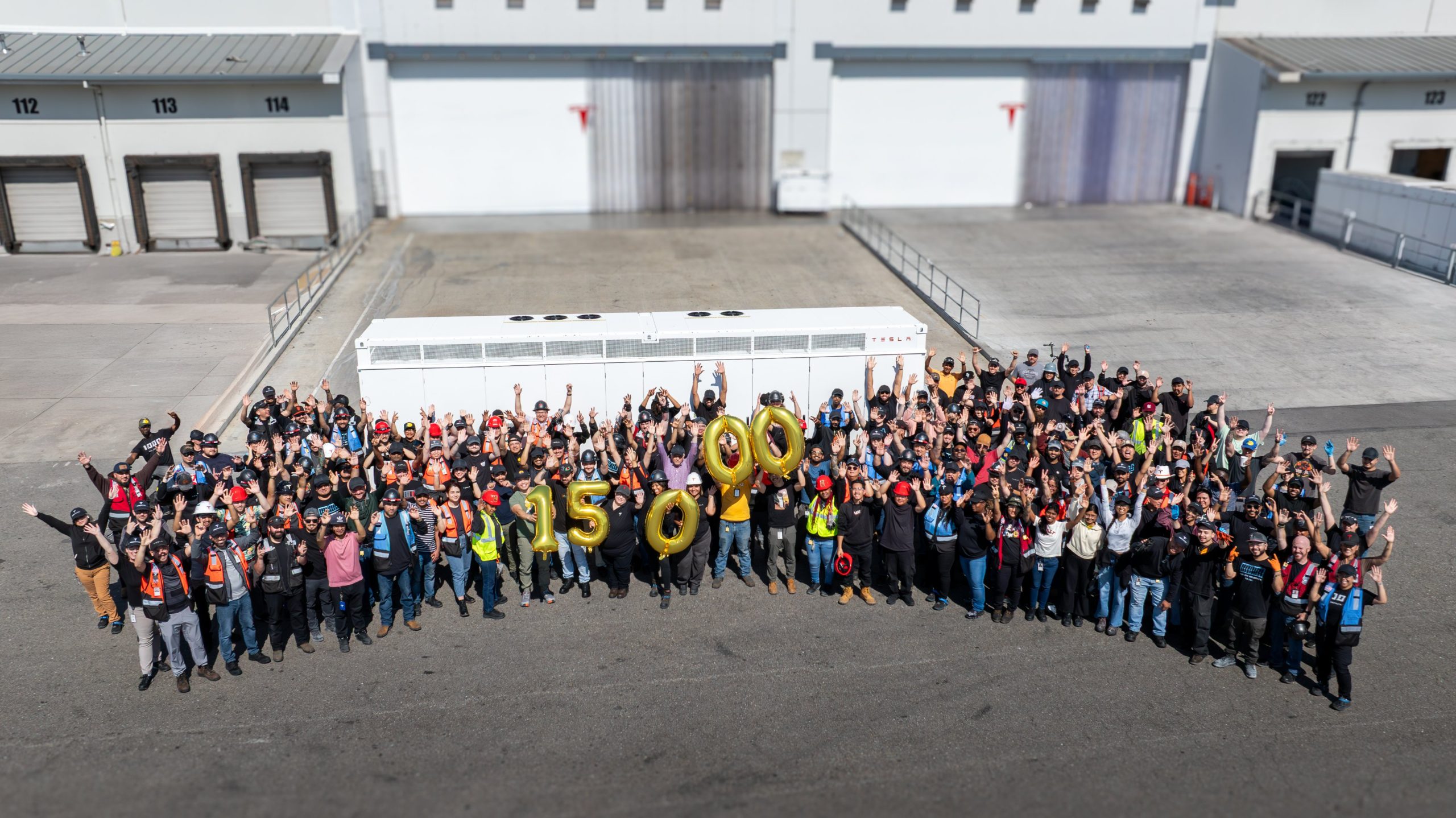
The Tesla Lathrop Megafactory recently achieved a new milestone. As per the official Tesla Megapack account on X, the Lathrop Megafactory has produced its 15,000th Megapack 2 XL battery.
15,000 Megapack Batteries
Tesla celebrated the milestone with a photo of the Lathrop Megafactory team posing with a freshly produced Megapack battery. To commemorate the event, the team held balloons that spelled out “15,000” as they posed for the photo.
The Tesla Megapack is the backbone of Tesla Energy’s battery deployments. Designed for grid-scale applications, each Megapack offers 3.9 MWh of energy and 1.9 MW of power. The battery is extremely scalable, making it perfect for massive energy storage projects.
More Megafactories
The Lathrop Megafactory is Tesla’s first dedicated facility for its flagship battery storage system. It currently stands as the largest utility-scale battery factory in North America. The facility is capable of producing 10,000 Megapack batteries every year, equal to 40 GWh of clean energy storage.
Thanks to the success of the Megapack, Tesla has expanded its energy business by building and launching the Shanghai Megafactory, which is also expected to produce 40 GWh of energy storage per year. The ramp of the Shanghai Megafactory is quite impressive, with Tesla noting in its Q1 2025 Update Letter that the Shanghai Megafactory managed to produce over 100 Megapack batteries in the first quarter alone.
Tesla Energy’s Potential
During the first quarter earnings call, CEO Elon Musk stated that the Megapack is extremely valuable to the energy industry.
“The Megapack enables utility companies to output far more total energy than would otherwise be the case… This is a massive unlock on total energy output of any given grid over the course of a year. And utility companies are beginning to realize this and are buying in our Megapacks at scale,” Musk said.
Energy
Tesla Megapacks powers the xAI Colossus supercomputer
Tesla Megapacks step in to stabilize xAI’s Colossus supercomputer, replacing natural gas turbines. Musk’s ventures keep intertwining.
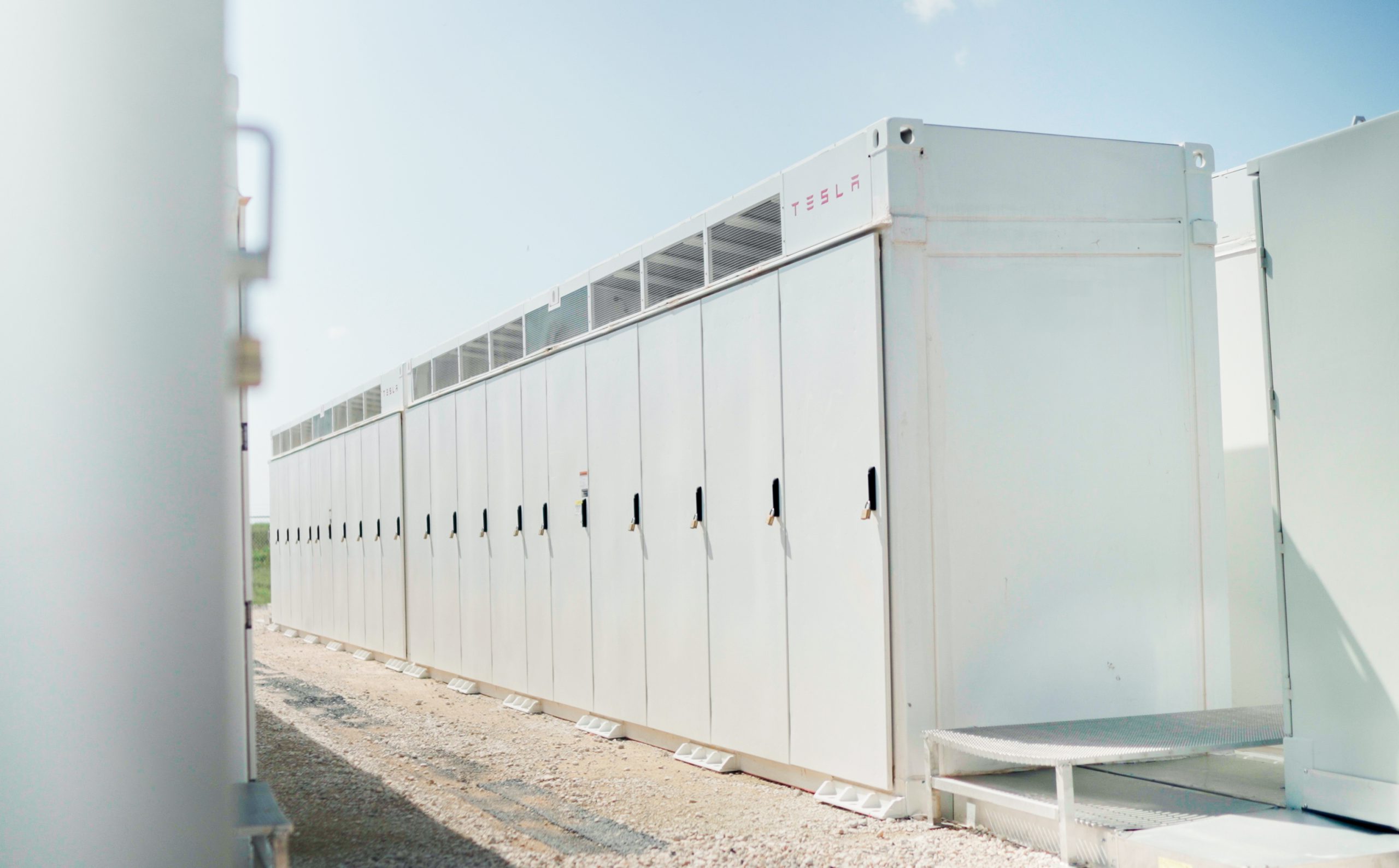
Tesla Megapack batteries will power the xAI Colossus supercomputer in Memphis to ensure power stability. The collaboration between Tesla and xAI highlights the synergy among Elon Musk’s ventures.
The artificial intelligence startup has integrated Tesla Megapacks to manage outages and demand surges, bolstering the facility’s reliability. The Greater Memphis Chamber announced that Colossus, recently connected to a new 150-megawatt electric substation, is completing its first construction phase. This transition addresses criticism from environmental justice groups over the initial use of natural gas turbines.
“The temporary natural gas turbines that were being used to power the Phase I GPUs prior to grid connection are now being demobilized and will be removed from the site over the next two months.
“About half of the operating turbines will remain operating to power Phase II GPUs of xAI until a second substation (#22) already in construction is completed and connected to the electric grid, which is planned for the Fall of 2025, at which time the remaining turbines will be relegated to a backup power role,” the Chamber stated.
xAI’s rapid development of Colossus reflects its ambition to advance AI capabilities, but the project has faced scrutiny for environmental impacts. The shift to Megapacks and grid power aims to mitigate these concerns while ensuring operational continuity.
The Megapack deployment underscores the collaboration among Musk’s companies, including Tesla, SpaceX, Neuralink, and The Boring Company. Tesla appears to be the common link between all of Musk’s companies. For example, The Boring Company built a tunnel in Giga, Texas. In addition, Musk has hinted at a potential collaboration between the Tesla Optimus Bot and Neuralink. And from January 2024 to February 2025, xAI invested $230 million in Megapacks, per a Tesla filing.
Tesla Energy reported a 156% year-over-year increase in Q1 2025, deploying 10.4 GWh of storage products, including Megapacks and Powerwalls. Tesla’s plans for a new Megapack factory in Waller County, Texas, which is expected to create 1,500 jobs in the area, further signal its commitment to scaling energy solutions.
As xAI leverages Tesla’s Megapacks to power Colossus, the integration showcases Musk’s interconnected business ecosystem. The supercomputer’s enhanced stability positions xAI to drive AI innovation, while Tesla’s energy solutions gain prominence, setting the stage for broader technological and economic impacts.
Energy
Tesla Energy celebrates one decade of sustainability
Tesla Energy has gone far since its early days, and it is now becoming a progressively bigger part of the company.
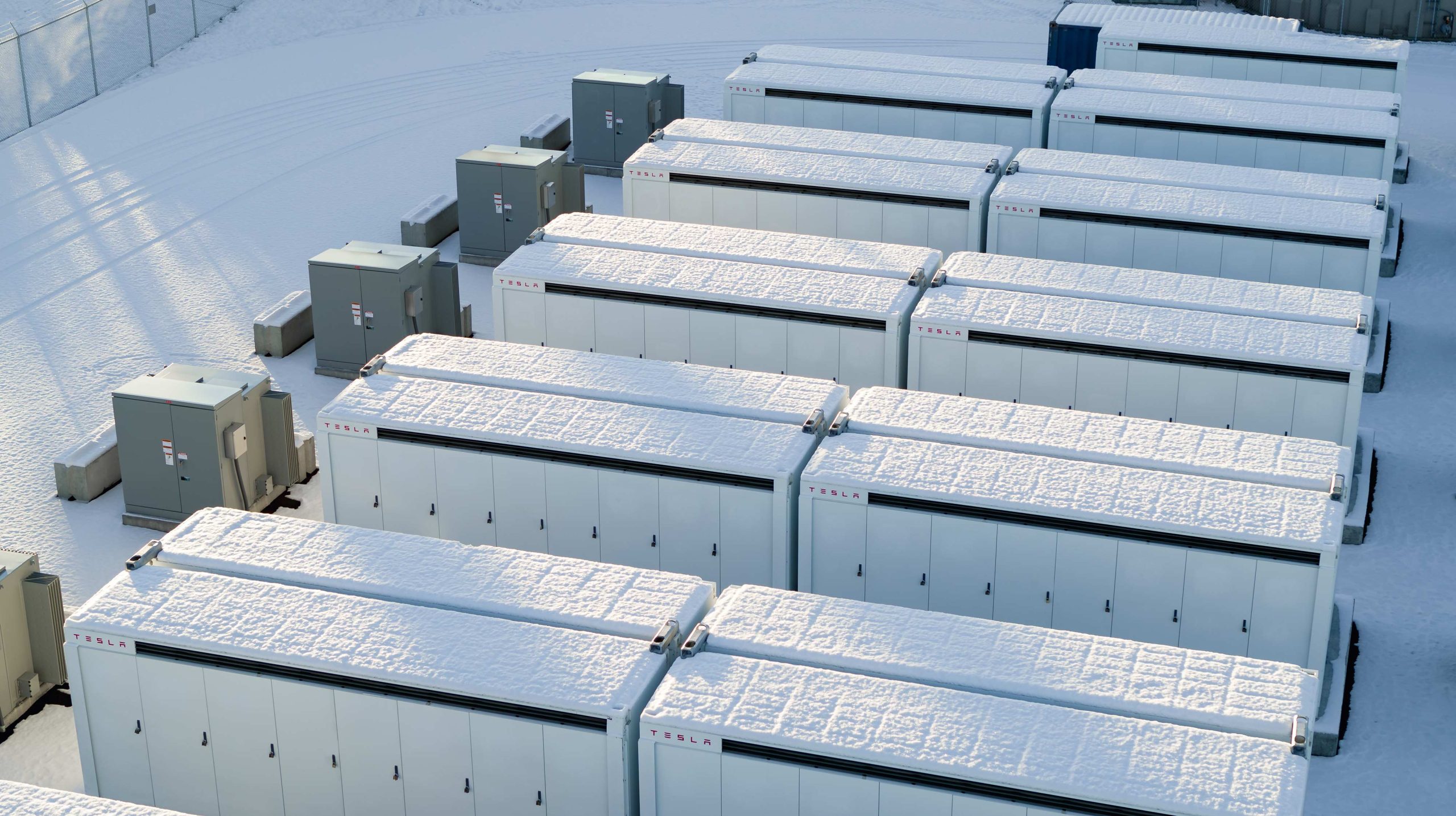
Tesla Energy recently celebrated its 10th anniversary with a dedicated video showcasing several of its milestones over the past decade.
Tesla Energy has gone far since its early days, and it is now becoming a progressively bigger part of the company.
Tesla Energy Early Days
When Elon Musk launched Tesla Energy in 2015, he noted that the business is a fundamental transformation of how the world works. To start, Tesla Energy offered the Powerwall, a 7 kWh/10 kWh home battery system, and the Powerpack, a grid-capable 100 kWh battery block that is designed for scalability. A few days after the products’ launch, Musk noted that Tesla had received 38,000 reservations for the Powerwall and 2,500 reservations for the Powerpack.
Tesla Energy’s beginnings would herald its quiet growth, with the company later announcing products like the Solar Roof tile, which is yet to be ramped, and the successor to the Powerwall, the 13.5 kWh Powerwall 2. In recent years, Tesla Energy also launched its Powerwall 3 home battery and the massive Megapack, a 3.9 MWh monster of a battery unit that has become the backbone for energy storage systems across the globe.
Key Milestones
As noted by Tesla Energy in its recent video, it has now established facilities that allow the company to manufacture 20,000 units of the Megapack every year, which should help grow the 23 GWh worth of Megapacks that have already been deployed globally.
The Powerwall remains a desirable home battery as well, with more than 850,000 units installed worldwide. These translate to 12 GWh of residential entry storage delivered to date. Just like the Megapack, Tesla is also ramping its production of the Powerwall, allowing the division to grow even more.
Tesla Energy’s Role
While Tesla Energy does not catch as much headlines as the company’s electric vehicle businesses, its contributions to the company’s bottom line have been growing. In the first quarter of 2025 alone, Tesla Energy deployed 10.4 GWh of energy storage products. Powerwall deployments also crossed 1 GWh in one quarter for the first time. As per Tesla in its Q1 2025 Update Letter, the gross margin for the Energy division has improved sequentially as well.
-

 Elon Musk2 weeks ago
Elon Musk2 weeks agoTesla investors will be shocked by Jim Cramer’s latest assessment
-

 Elon Musk2 days ago
Elon Musk2 days agoxAI launches Grok 4 with new $300/month SuperGrok Heavy subscription
-

 Elon Musk4 days ago
Elon Musk4 days agoElon Musk confirms Grok 4 launch on July 9 with livestream event
-

 News1 week ago
News1 week agoTesla Model 3 ranks as the safest new car in Europe for 2025, per Euro NCAP tests
-

 Elon Musk2 weeks ago
Elon Musk2 weeks agoA Tesla just delivered itself to a customer autonomously, Elon Musk confirms
-

 Elon Musk1 week ago
Elon Musk1 week agoxAI’s Memphis data center receives air permit despite community criticism
-

 News2 weeks ago
News2 weeks agoXiaomi CEO congratulates Tesla on first FSD delivery: “We have to continue learning!”
-

 Elon Musk2 weeks ago
Elon Musk2 weeks agoTesla scrambles after Musk sidekick exit, CEO takes over sales


